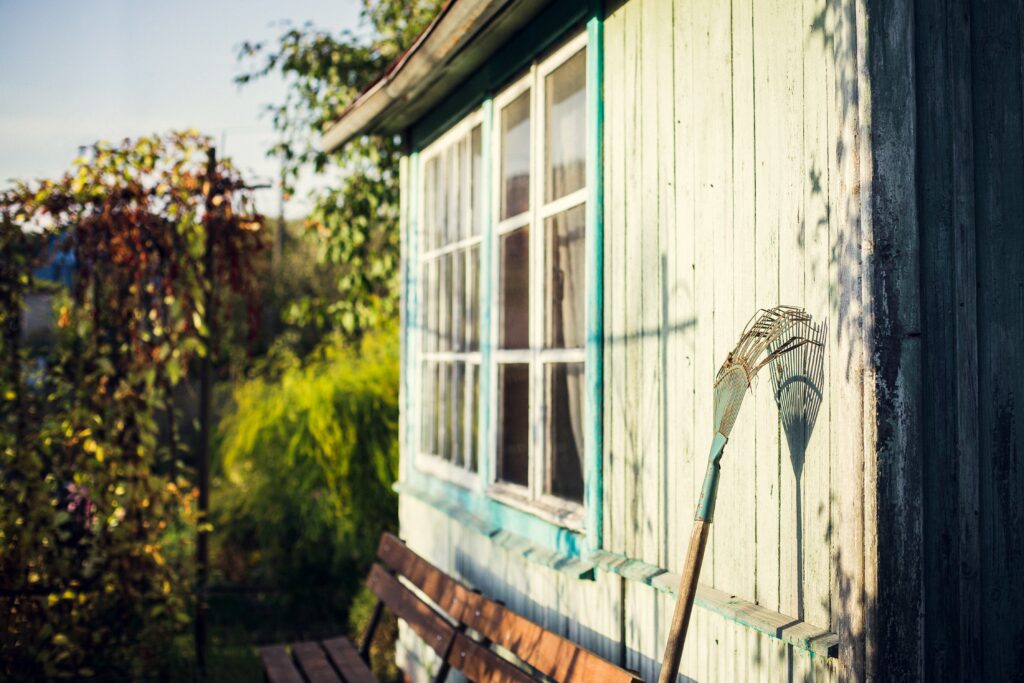Mould is everywhere in nature and its presence is not always obvious. It can be found both indoors and outdoors, on plants, food, soil, water – even in the air we breathe. Although often associated with damp and cold environments, certain types can thrive in a variety of conditions. While most moulds are harmless, some can cause serious health problems. Let’s take a closer look at where we routinely interact with it in everyday life.

Mould fungus occurs both indoors and outdoors
Mould is one of the most common forms of fungi out there. It can quickly spread in moist and warm environments which helps it to grow. Both indoors and outdoors, it occurs almost anywhere. Inside it easily colonises wood, drywall, paper, carpeting and food.
Noticing a musty smell or dampness in a room are two of the telltale signs of it becoming established indoors. It’s important to immediately address any located mould to prevent continued multiplication, and spread to other surfaces. This limits the potential damage it could cause.
This fungus thrives in damp, humid environments anywhere
Mould thrives in damp and humid conditions, is common to both urban and natural environments. The spores occur naturally everywhere outdoors. It is particularly concentrated in areas of decomposing organic matter such as rotting wood or grass clippings. In colder climates, moulds are even present in organic material frozen under the snow. Fungal growths commonly form on rocks, soil and even plants when temperatures become warm and humid. Buildings located close to water can experience an abundance of mould growth. This is due to the high concentration of moisture in the air from frequent condensation.
Indoors, black spots in bathrooms and food cupboards emerge on any surface that remains damp, and does not completely dry enough. This then creates the perfect environment for a rapidly-growing colony of fungi. Mould is a useful part of nature. Identifying where it lives and understanding how to combat its spread helps us keep our homes safe from the potentially damaging effects associated with mould infestations.
Common places where mould lives indoors
Black and green mould are common sights in homes that are damp or have inadequate ventilation. Unfortunately, their spores can quickly spread throughout buildings if they’re ignored. So it’s important to be aware of where mould is likely to grow.

Examples include bathrooms due to the high humidity. Kitchens because of food scraps and steam. Basements because of flooding risk and below-ground being prone to dampness. Laundry rooms with wet items being regularly washed and stored. These are all spaces which are especially vulnerable to mould growth.
Fungi can sometimes even survive for extended periods without a source of moisture. With spores just waiting for any dampness to trigger growth, it is wise to inspect these areas regularly for signs of mould. Then take precautions as soon as possible.
Mould at school and work
As it is everywhere it is not surprising that excessive mould accumulation can happen in any buildin. This includes both school and work environments. It is important to be aware that mould-related exposure and harm can occur in environments other than your home too. I mention this because the home tends to be the core focus of most available information about managing it.
Common sites include damp walls and floors that are not regularly dried and vacuumed. Also, bathroom tile grout, attics, basements or air conditioning systems and other areas where water accumulates on surfaces. Just take a moment to think what these areas are where you work and where your children go to school.
Uncontrolled humidity levels contribute to mould growth, as can areas of stagnant air.
It is thus important for schools and workplaces to take measures such as making use of dehumidifiers or setting up ventilation systems and routines so that these unhelpful conditions do not develop. Regular housekeeping and maintenance practices are also essential to address spills and leaks as they occur and to ensure the interior environment is kept clean. An effective combination of preventative maintenance, routine inspections of vulnerable areas and equipment and prompt action when mould first appears can help organisations effectively control the spread effectively and limit damage and potential harm.
This fungus can make a home in cars, caravans and sheds
Mould can be a serious issue in cars, caravans and sheds, which could lead to serious effects on both your health and these structures.
The sheltered, warm and moist environment within a vehicle, shed or caravan is an ideal breeding ground for mould to form, and it will thrive in such conditions. When left untreated, this results in issues like paint fading, surfaces becoming colonised, window frames rotting and potential health problems from mould spores being inhaled in a confined space.

It is therefore important to take steps to prevent mould from forming and taking over a vehicle, caravan or shed by providing plenty of regular airing, reducing humidity levels and actively cleaning out any excess moisture. Keeping on top of the problem will help ensure your vehicles, caravans or sheds are healthy and safe environments for many years to come.
Mould in soil and leaves
Fungi are an incredibly common and important part of life on Earth. Theyare found in nearly all environments and serve a necessary role in the balance of nature. Mould is commonly present in soil and fallen leaves due to their high organic content and moist environments that are ideal for the organisms’ growth. Some research has shown that there can be up to 800 species of mould per gram of soil! This diversity offers a range of benefits from rotting down organic matter back into its nutrient state, contributing to healthy plant growth, to providing various food sources for other organisms in the area. What may appear unsightly is often much larger than meets the eye in terms of complexity and importance to our ecosystem.
Spores colonising foods, materials, and equipment in your home
In the right environment, like moist, damp places, even small amounts of moisture can trigger a rapid mould infestation. Items like food, home materials e.g. carpets and clothing, can be an ideal surfaces for mould to take root. This can result in discolouration, odours and musty smells that become unmistakable indicators of mould presence.
It’s worth noting that not all visible spots or stains are mould – some may simply be dirt or dust. However, if the stain results from condensation it’s important to identify and address the source cause as soon as possible to minimize any further contamination from growth.
Given its potential to grow and spread quickly, actively monitoring and controlling moisture levels can go a long way towards preventing persistent mould problems.
As well as furniture, clothes and carpets, it is important to take regular measures to prevent the formation of mould in household appliances. This includes fridges, washing machines, tumble dryers and dishwashers. If left unchecked, it can grow quickly and spread its spores to other surfaces, rooms, materials and through the air. Its prescence prpobably reduces the lifespan of the appliances but more concerningly, can put people and pets’ health at risk.

The best way to keep mould out of these appliances is to keep them clean and dry. Also, ensure there is enough ventilation in and around each device. If a water or sewage pipe leaks from or near an appliance, take immediate action to stop this. Dry the area and restore the airflow circulation before mould tries to get in.
Additionally, an appropriate cleaning regime should be employed regularly throughout all parts of the home. This must include household appliances. This can help keep the moisture concentration low and preven dampness becoming trapped in hidden places. It it in these places that mould could begin forming unseen.
With those steps in mind, you can ensure that your appliances remain mould-free for a long time to come.
While mould may seem like a small and insignificant problem, it does have the potential to cause structural damage and serious health problems.
If you think you might have mould in your home or workplace, the best thing to do is to get rid of it all as soon as possible. However, this isn’t always easy to do.
The most realistic approach is to learn how to live alongside mould in our world. Aim to enjoy the benefits it brings, while actively keeping it in check so that it does not compromise our lives.
This means being proactive about preventing damp and humid conditions that allow and encourage mould to thrive. It also means regularly cleaning areas where it is likely to grow, such as bathrooms, kitchens, basements, and laundry rooms. By taking these steps, you can help keep yourself and those around you safe from the harmful effects of mould.